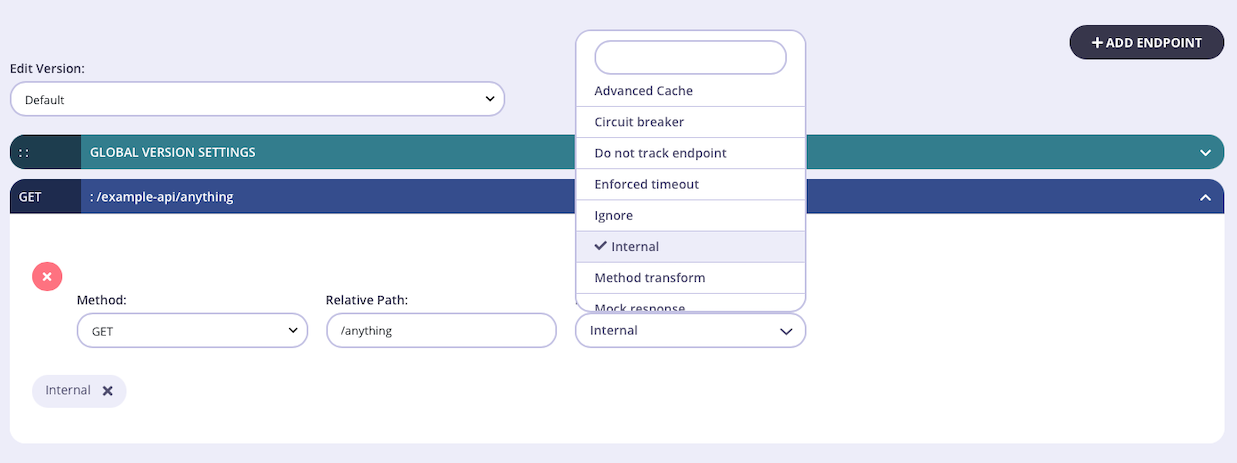Using the Internal Endpoint middleware with Tyk Classic APIs
Last updated: 2 minutes read.
The Internal Endpoint middleware instructs Tyk Gateway not to process external requests to the endpoint (which is a combination of HTTP method and path). Internal requests from other APIs will be processed.
When working with Tyk Classic APIs, the middleware is configured in the Tyk Classic API Definition. You can do this via the Tyk Dashboard API or in the API Designer.
If you’re using the newer Tyk OAS APIs, then check out the Tyk OAS page.
Configuring the middleware in the Tyk Classic API Definition
To enable the middleware you must add a new internal object to the extended_paths section of your API definition.
The internal object has the following configuration:
path: the endpoint pathmethod: the endpoint HTTP method
For example:
|
|
In this example the internal endpoint middleware has been configured for HTTP GET requests to the /status/200 endpoint. Any requests made to this endpoint that originate externally to Tyk will be rejected with HTTP 403 Forbidden. Conversely, the endpoint can be reached internally by another API at tyk://<listen_path>/status/200.
Configuring the middleware in the API Designer
You can use the API Designer in the Tyk Dashboard to configure the internal endpoint middleware for your Tyk Classic API by following these steps.
Step 1: Add an endpoint for the path and select the plugin
From the Endpoint Designer add an endpoint that matches the path that you wish to set as internal. Select the Internal plugin.

Step 2: Save the API
Use the save or create buttons to save the changes and activate the middleware.
